In the north of Laos, at the confluence of the Mekong and Nam Kha rivers, lies one of the most beautiful and charming cities in all of Southeast Asia: Luang Prabang.
Despite being one of the first destinations on our backpacking trips, its competitors have not made it fall from the top five places we like most in the area, and our subsequent visits have only improved our opinion of it.
Luang Prabang is a must-see when touring the country, as it was declared a World Heritage Site by UNESCO in 1995. Every day, monks, locals and tourists walk through its streets full of temples and colonial houses, or enjoy its restaurants and charming accommodations.
Luang Prabang was the royal capital of Laos until King Phothisarat moved the administrative headquarters to Vientiane in 1545. Today, it remains the main center of Buddhist studies in Laos, with its 33 wats or temples.
Although it is true that the entire city center has become a very touristy area and prices are higher than in the rest of Laos, walking around Luang Prabang and admiring its temples and French colonial architecture will send us to another era.
Don’t forget to sit on a terrace to watch the Mekong at sunset or visit its night market: you will enjoy the peaceful atmosphere, very different from the rest of the cities in Southeast Asia.
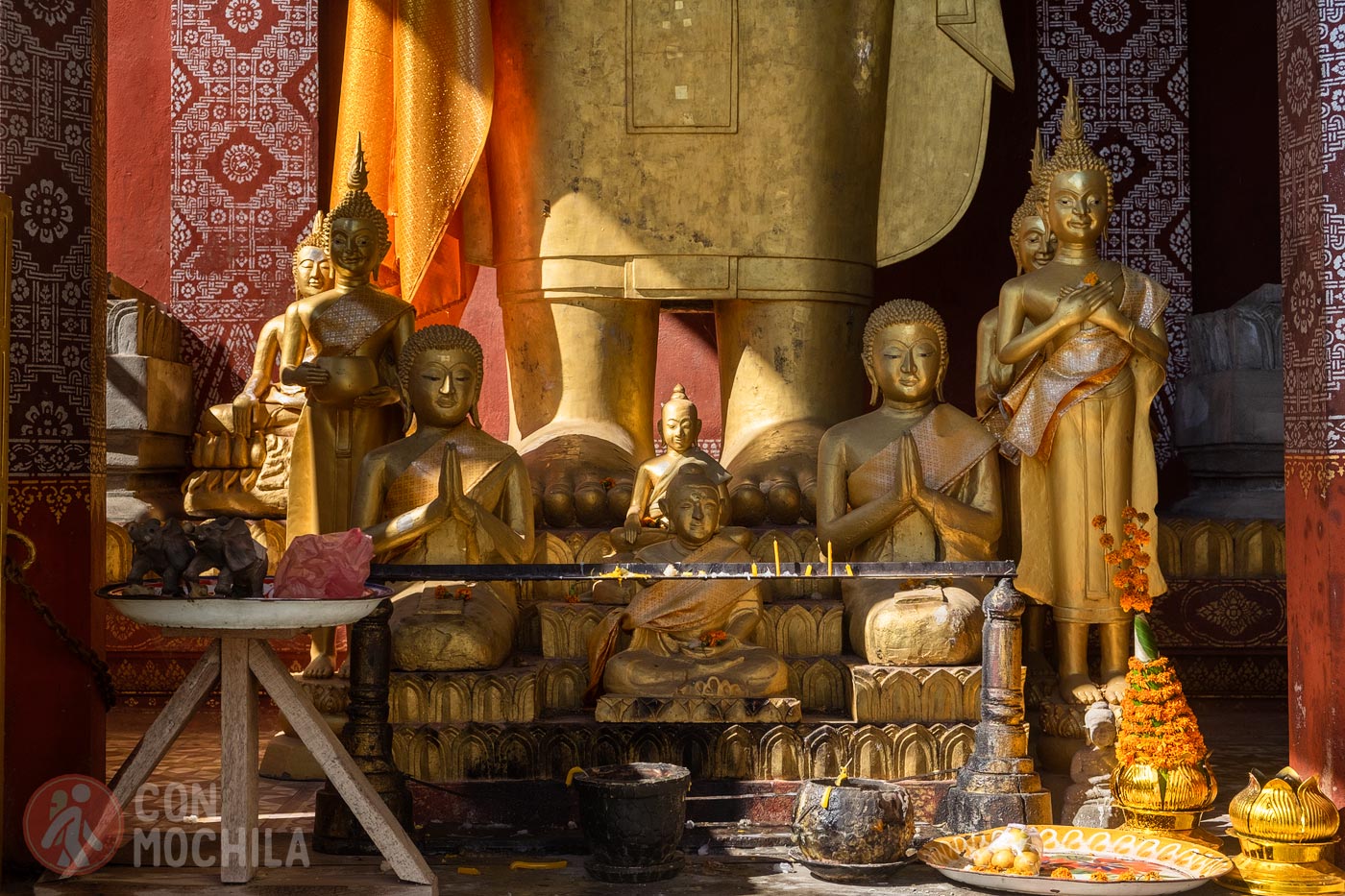
And if the center of Luang Prabang is culture and history, its surroundings are pure nature and adventure: sailing along the Mekong, getting lost on a motorbike or swimming in turquoise waterfalls will be the only activities that will get you to speed up the slow pace a little, but without stressing you out.
Luang Prabang, in northern Laos, has a tropical monsoon climate characterized by warm temperatures throughout the year and a marked differentiation between the dry and the rainy season. It could be said that the year has three main sections. We detail the weather here:
Dry season:
Rainy season:
The Laos visa is easy to obtain, without having to do it in advance at embassies or anything like that, as it is one of those called “on arrival”. You only need to have a valid passport, a few more requirements, and money ($35). We’ll tell you everything about Visa for Laos, and how to get it quickly (coming soon).
It’s essential to travel to Laos with comprehensive insurance. We were among the first to offer the popular 5% IATI discount, and you can also now get it with Heymondo Travel Insurance as well. You can find more information through the link provided above, or you can access the discount directly using the buttons below (in both cases, you’ll see the reduced final price on their website):
While many hotels, guesthouses, and restaurants in Laos offer free Wi-Fi, some travelers prefer or need a constant connection. We’ve included details on obtaining a eSIM Laos card with unlimited data.
Luang Prabang has an international airport which you can reach from several neighboring places such as Bangkok, Chiang Mai, Hanoi, Kuala Lumpur, Siem Reap or Vientiane.
By bus from Huay Xai, Vang Vieng, or by bus/sleeper bus from Vientiane. There are three bus stations in Luang Prabang, ask any tuk-tuk driver and they will tell you which one to go to depending on where you are traveling to.
Not too many years ago, the railway bridge over the Mekong River was opened, extending transport services to many of the main cities. You can also take the train from Luang Prabang to Vientiane.
A two-day Mekong cruise starting in Huay Xai (border with Thailand). This is the most fun option, and you can find more information in the following articles:
The Buddhist temple Wat Xieng Thong is one of the most important monasteries in Southeast Asia. It was built in the 16th century by a Laotian king near the confluence of the Mekong and Nam Khan rivers. We will find several pavilions dedicated to different tasks, such as chapels, temples, stupas and ordination halls.
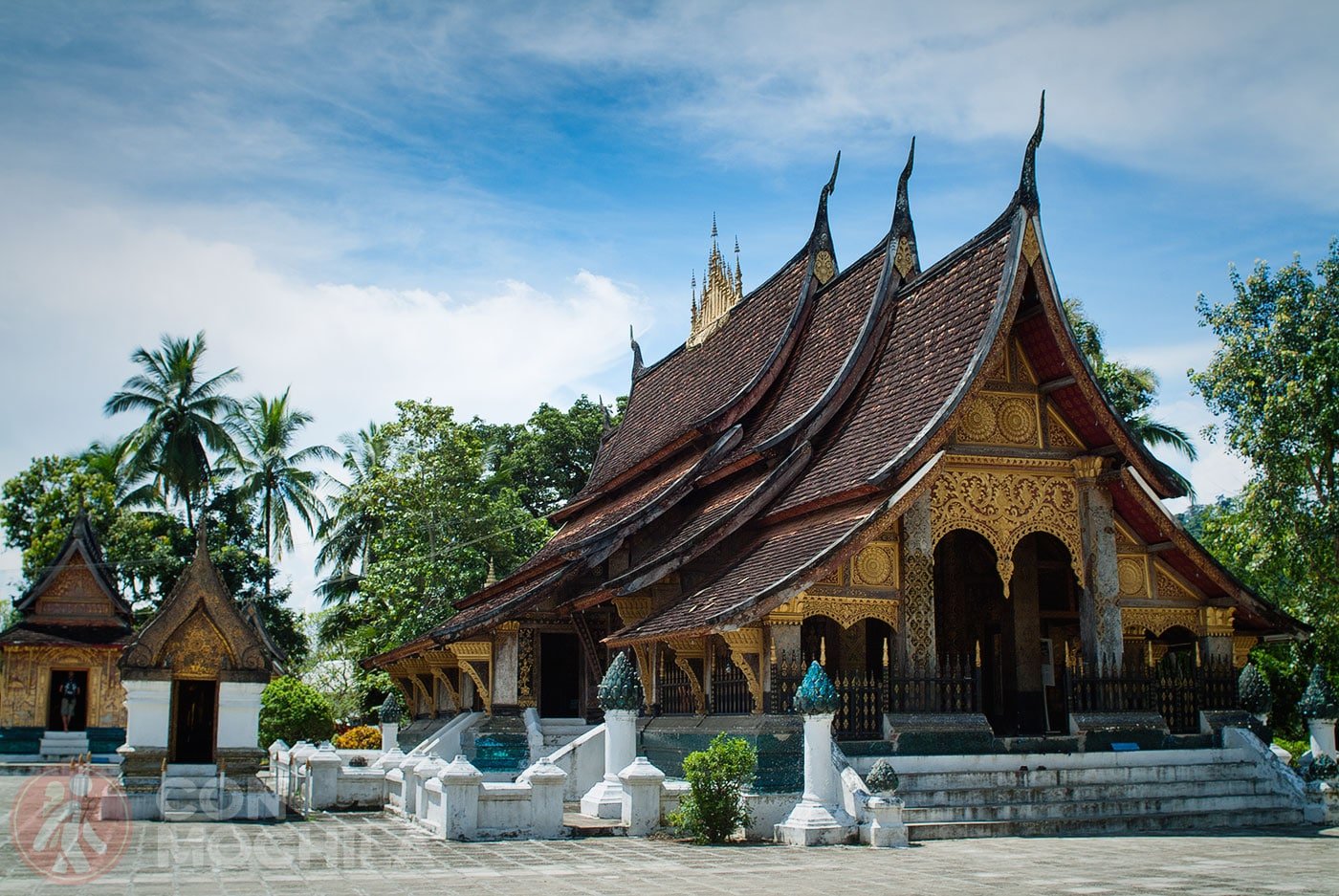
The main pagoda was the royal ordination hall, and contains ornamental mosaics. On its exterior, the most spectacular mosaic depicts the “Tree of Life” telling the story of the founding of the temple on a red background.
This ancient Wat, built in 1879, is a place of art teaching for a group of monks from Luang Prabang. Thanks to the support of UNESCO and the New Zealand government, Wat Xieng Muan has become a classroom where monks learn the artistic techniques necessary for the conservation of temples.
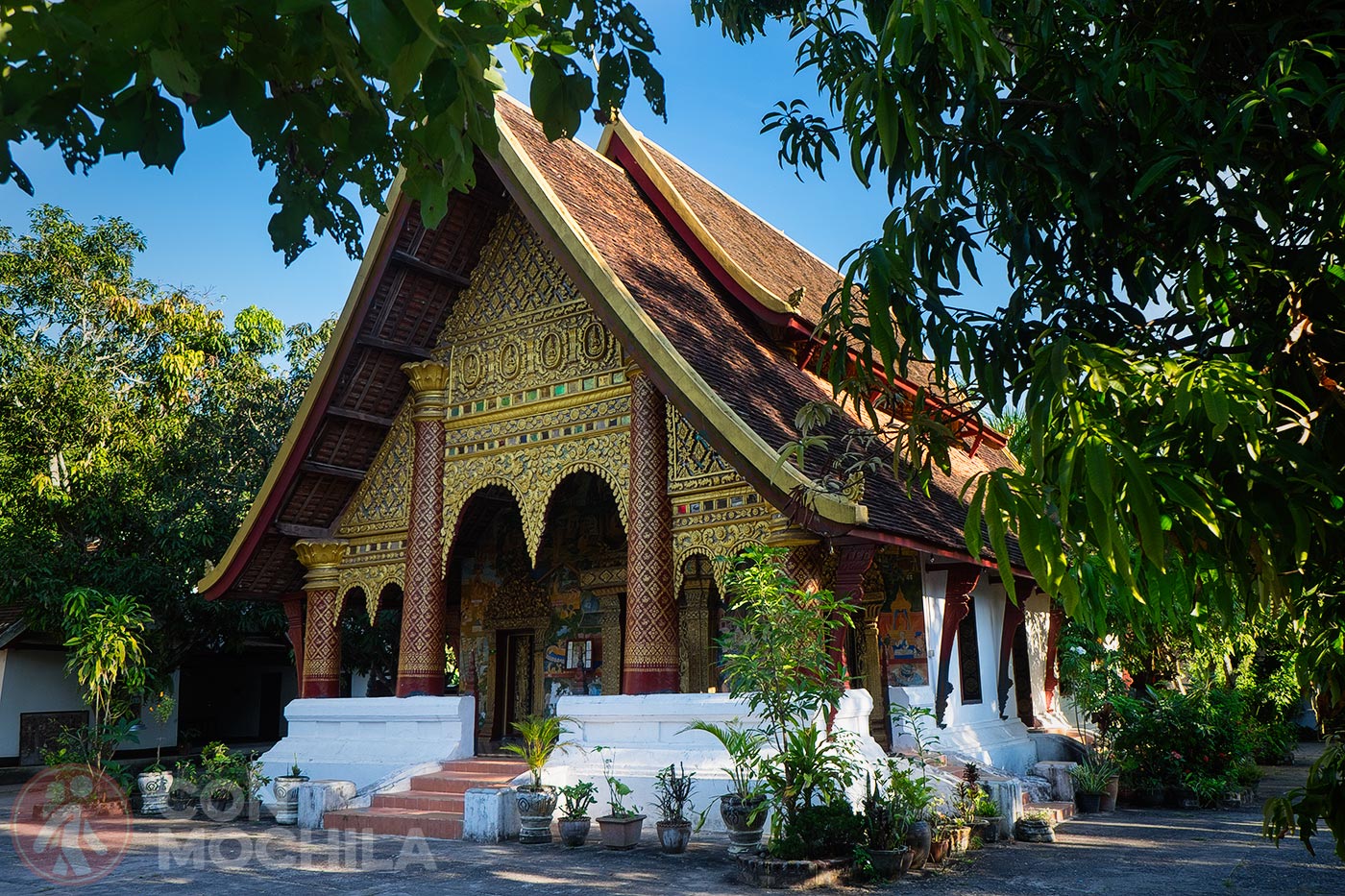
The monks draw, carve wood and forge Buddha figures under the watchful eye of their superior. We met this monk again eight years later, and it was very interesting to talk to him and see the look on his face when he saw himself in the photo on our website, a little younger. He couldn’t stop smiling!
Located in the heart of Luang Prabang, on Sisavangvong Street, Wat Mai Suwannaphumaham was founded in 1780 by King Anourout. With a five-pointed structure that reaches almost to the ground and is adorned with golden Nagas.
Its imposing decoration in black and red lacquer, as well as sheets of gold leaf that show reliefs with scenes of villages, the Ramayana and the life of Buddha, make it a spectacular site.
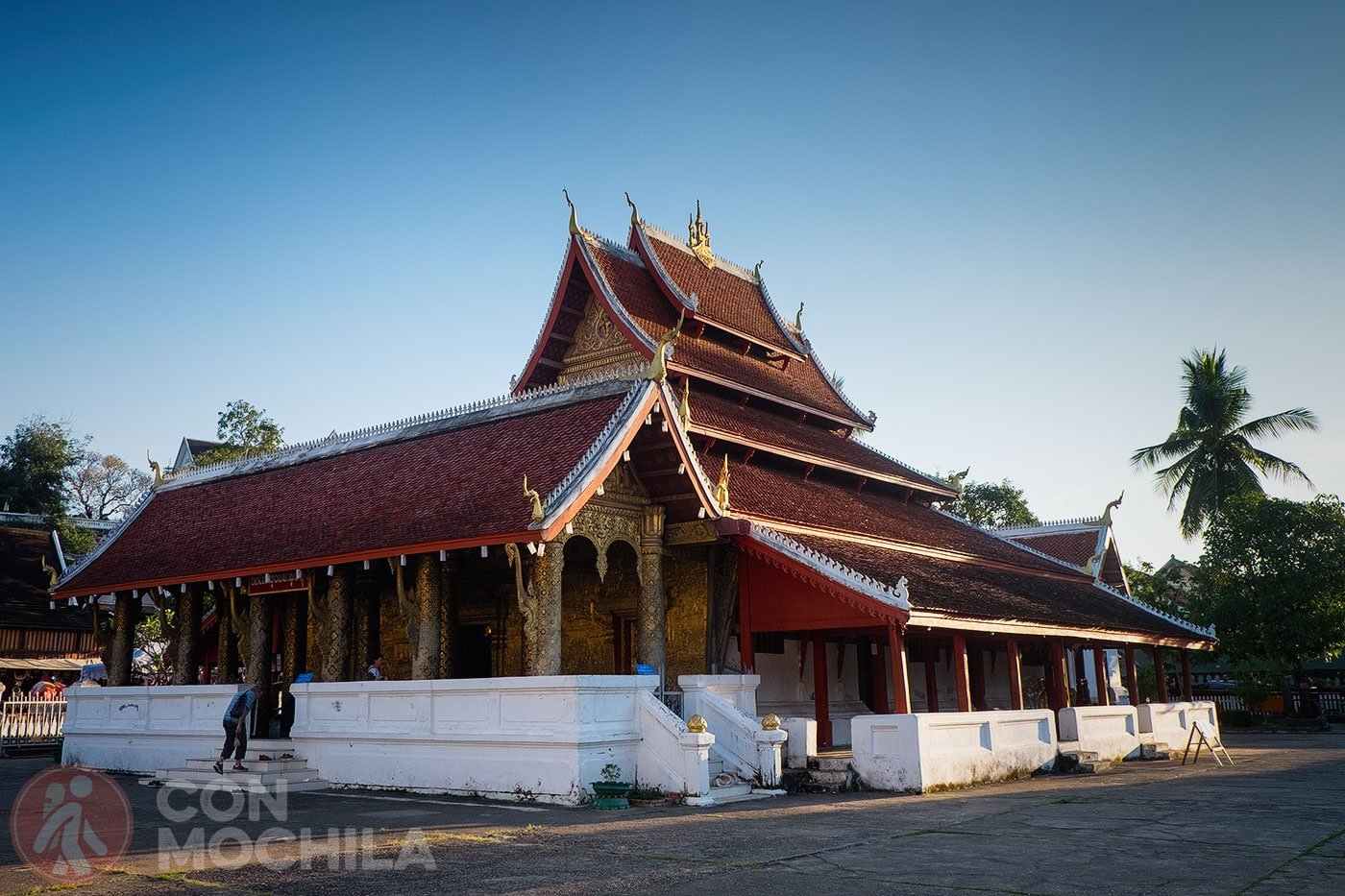
It is said to have been saved from destruction during the Chinese invasion in the late 19th century due to its beauty. For many years it housed the Phra Bang Buddha image, which was later moved to the Royal Palace Museum.
On the peninsula surrounded by the Mekong and Nam Khan rivers and north of Mount Pho Si, we find the Old Quarter of Luang Prabang.
The wooden houses, French colonial style buildings, temples and tranquility are some of the reasons why this city is one of the most relaxing in Southeast Asia. Here you will find some guest houses and bars.

You will find it impossible not to visit the Luang Prabang night market, one of the most charming places in Laos. It is set up every day at dusk, from the Royal Palace Museum to Th Kitsarat.
Walking around this market is a moment of relaxation and tranquility since you will not feel overwhelmed by any of the vendors.
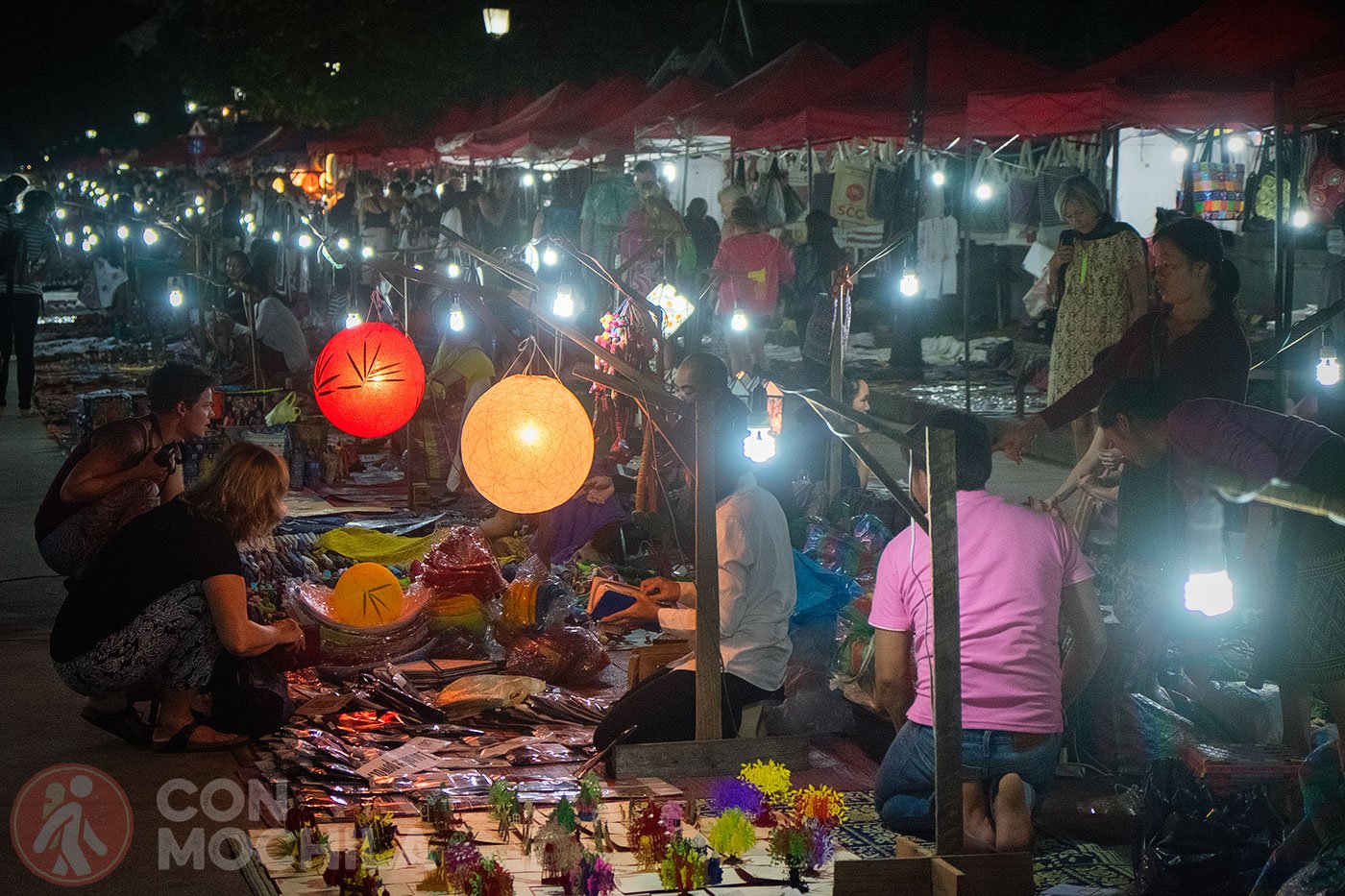
You will find textile products, decorative objects or the typical liquor bottles with snakes inside.
The Royal Palace Museum in Luang Prabang was built as the residence of King Sisavang Vong during the French colonial period in 1904.
It is located along the Mekong River, just behind it, so that visitors coming from the river could access it. It has a half French, half Laotian construction, with traditional Lao motifs and French Beaux Arts architecture.
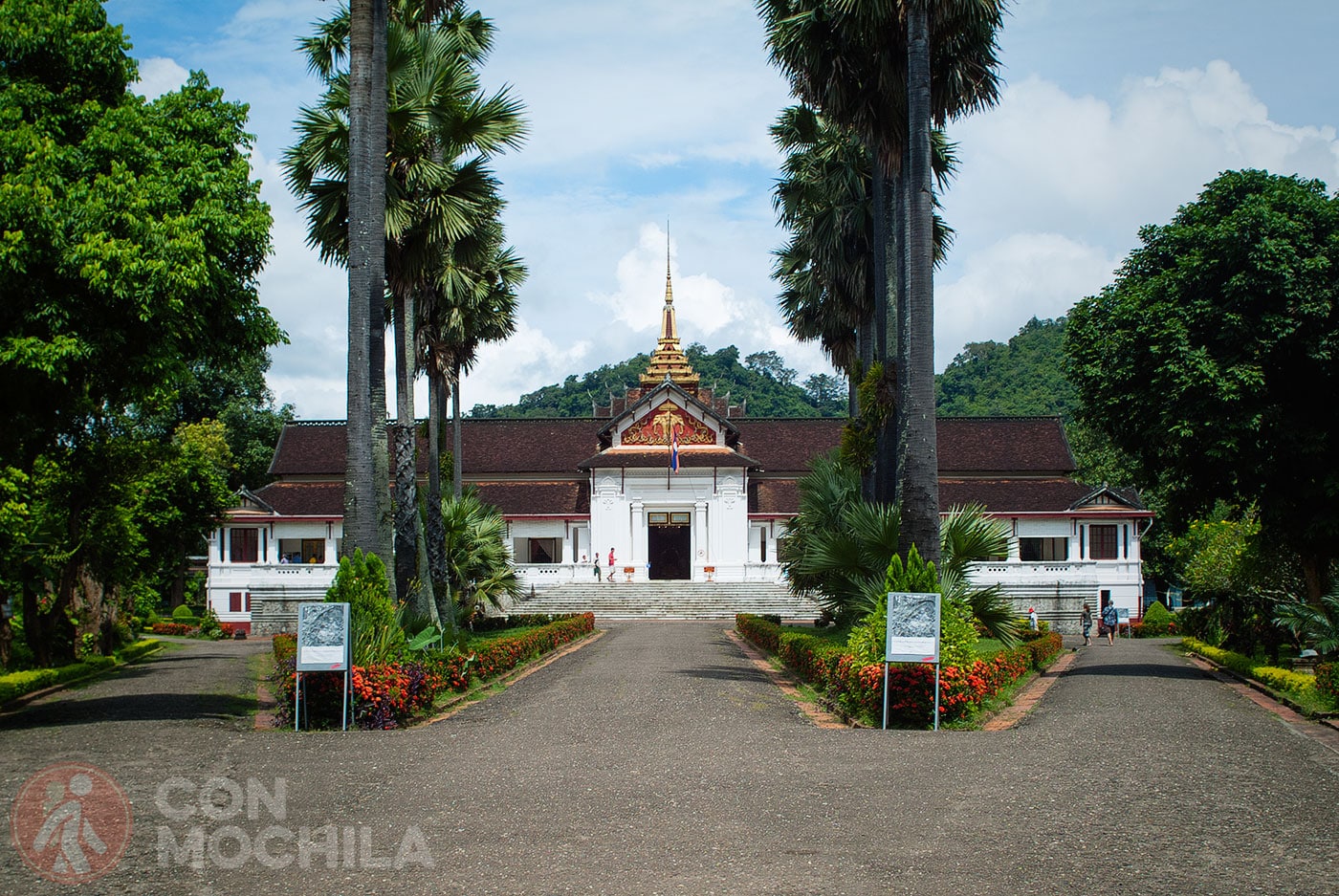
The entrance steps are majestic and made of Italian marble. Inside we will find the royal apartments, royal attire and other objects.
The best views of Luang Prabang are found at the top of Mount Phousi, where after climbing the 300 steps that separate the street from the top, you will have a 360-degree panoramic view of the city.
We recommend going up at dusk, when it is cooler, and you will be able to see the sunset and visit the Wat Chom Si temple.
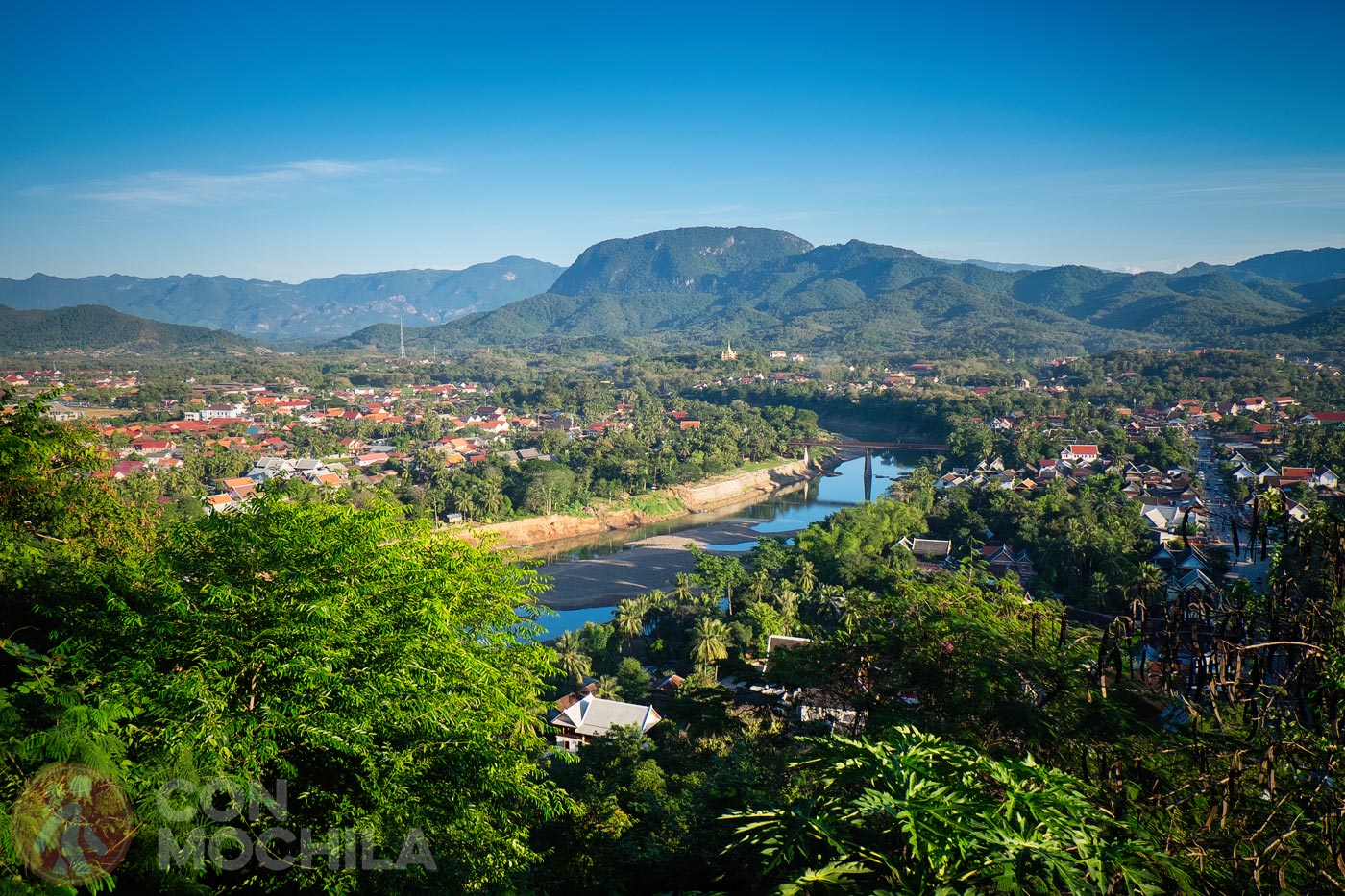
Attention! Note on caged birds that you can buy to release: for very little money they offer to open a cage and release the bird inside.
What they don’t tell you is that these birds end up returning to the cage a few minutes later and even if that weren’t the case, how would an animal born in captivity survive in the wild? Please do not contribute money to the continued breeding of animals for the sole purpose of profit.
Every morning, the alms-giving ceremony takes place on the streets of Luang Prabang. This tradition, in which devotees give food to monks at sunrise, has become popular among tourists who come to the event every day to take photos or even take part in it.
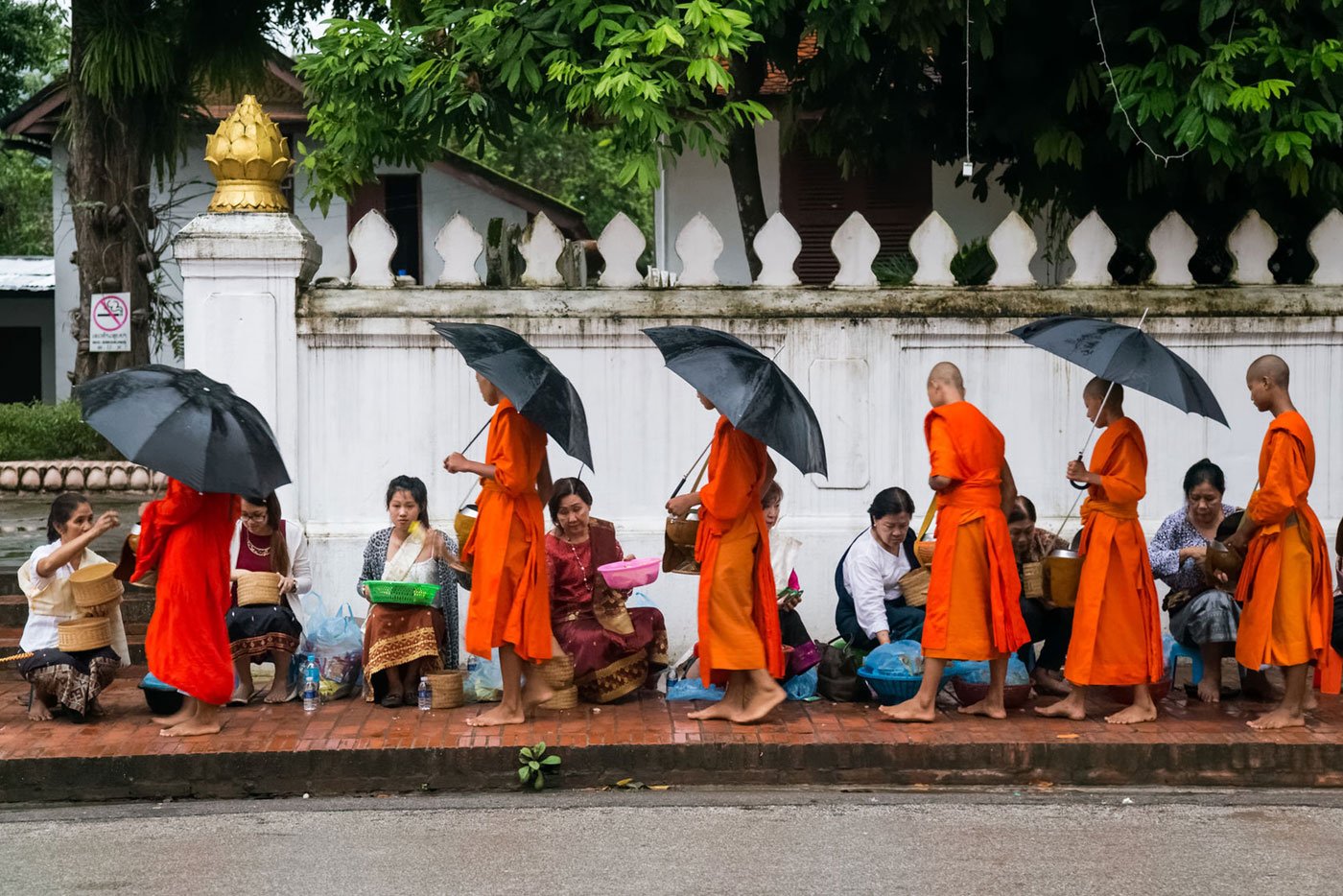
This is why in many temples you can see written some basic rules of conduct to enjoy the ceremony and the procession of monks in a respectful manner, remember to read them!
This bamboo bridge, that crosses the Nam Khan River from the Luang Prabang peninsula to the other side, disappears every year during the rainy season and is rebuilt in less than a week as soon as the river level drops and the locals are sure that the water will never rise again.
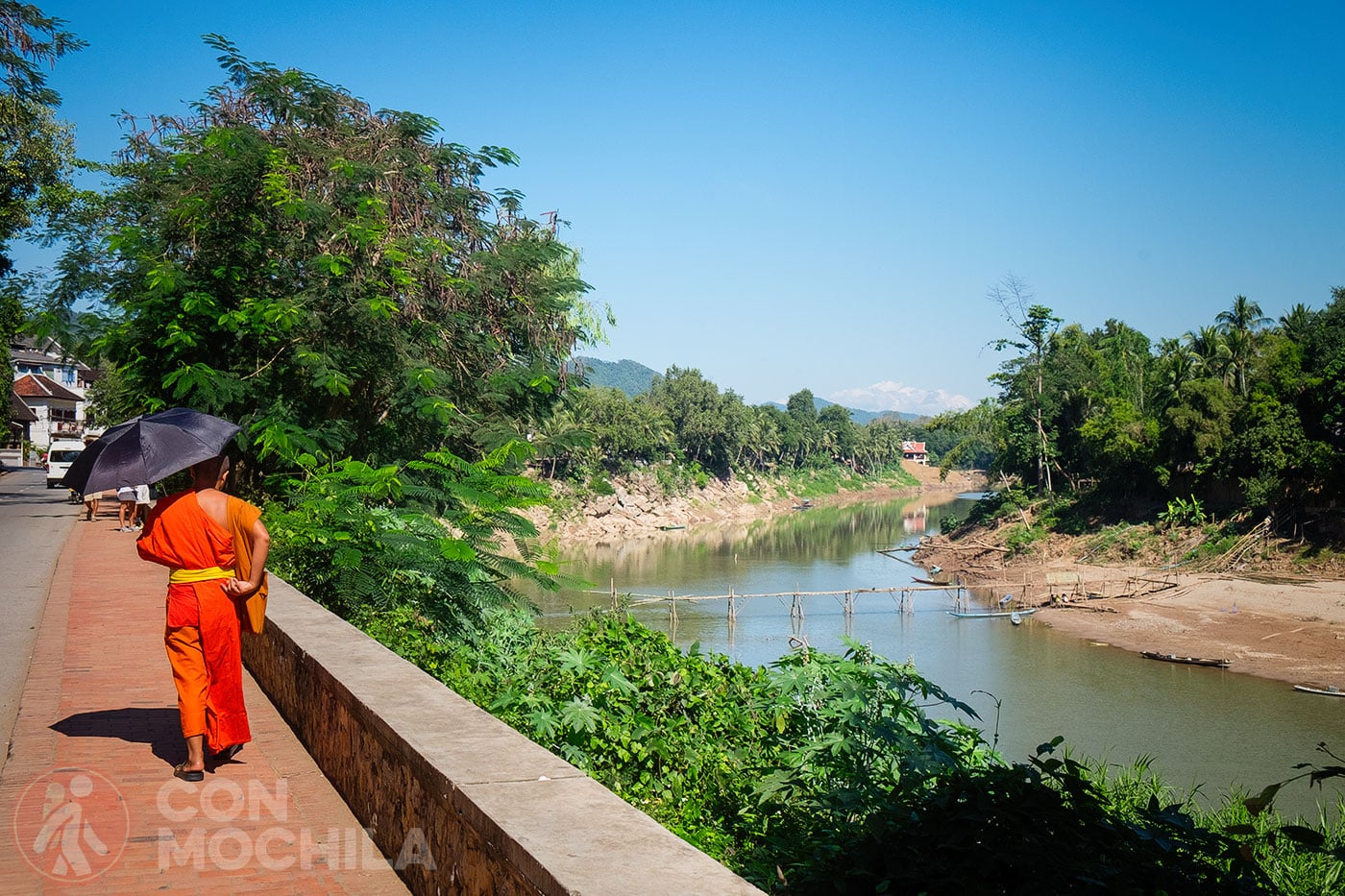
The small fee for crossing it is supposed to go to the family who builds it anew every year. On the other side, we find some villages with craftsmen, and there is a restaurant from where you can watch tourists, monks and locals crossing the bridge.
These waterfalls, at about 30 km from the city, are the largest and most popular, so there are always many tourists, both foreign and local. Several turquoise pools in which you can swim precede the most spectacular area of Tat Kuang Si, the waterfalls of about 50 meters high.
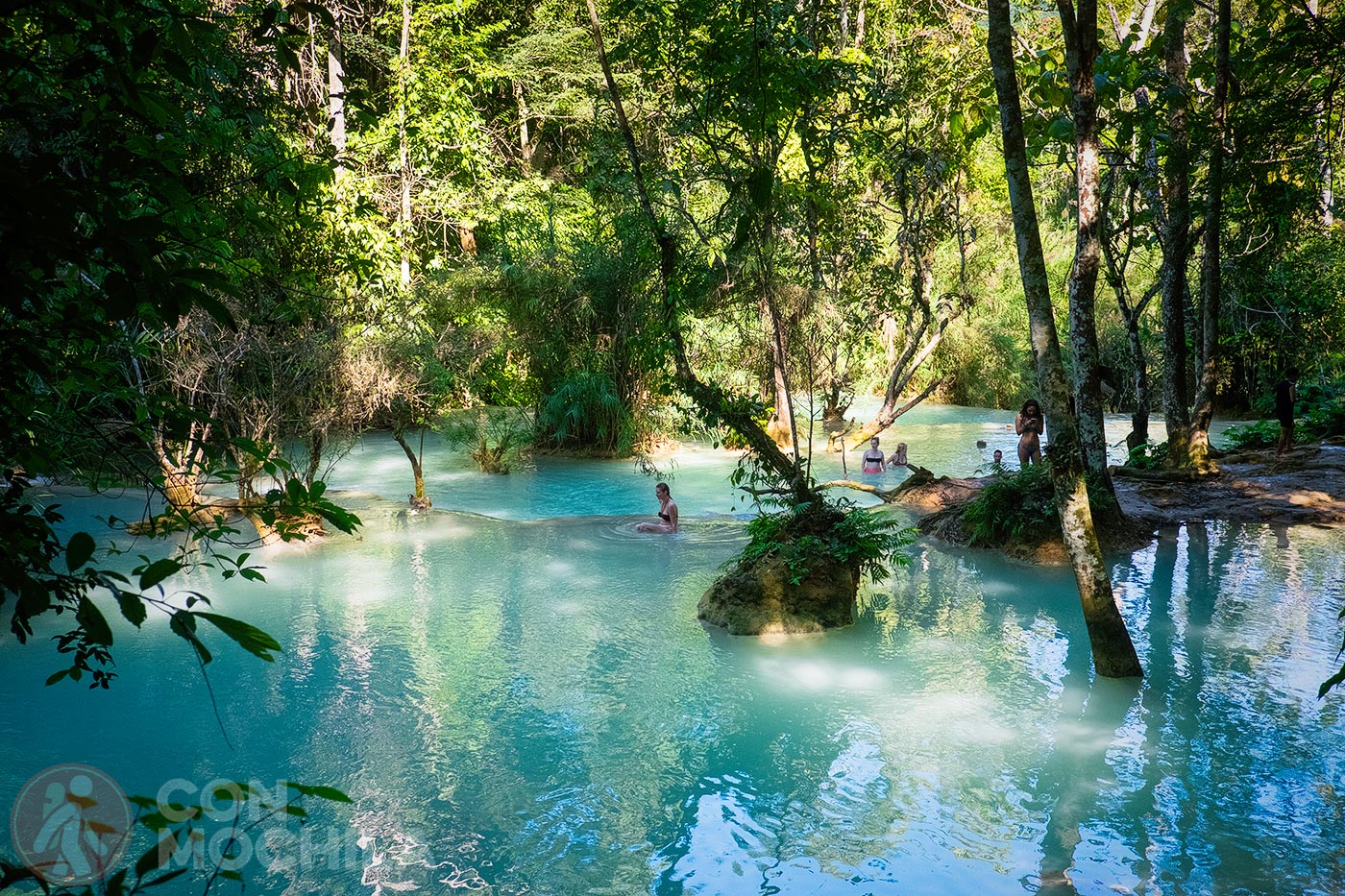
The area is accessible and easy to navigate (with some places with railings or platforms to easily cross) and, at the entrance, before reaching the ticket office where you buy the ticket, there are many food and souvenir stalls. You can get there by hiring a tuk tuk or renting a motorbike, you can’t miss it. However, if you don’t feel like organizing it on your own, here is a link to take a guided tour, which also includes the Pak Ou caves that we talk about below:
Tat Kuang Si waterfalls is also home to the Asiatic Black Bear Rescue Centre, which is home to around 20 bears rescued from bile farms or from the clutches of hunters and traffickers. There are explanatory murals where you can read much more about the bears, their circumstances and the reasons why they ended up there, and, although it is not a very large place, the animals are in good condition.
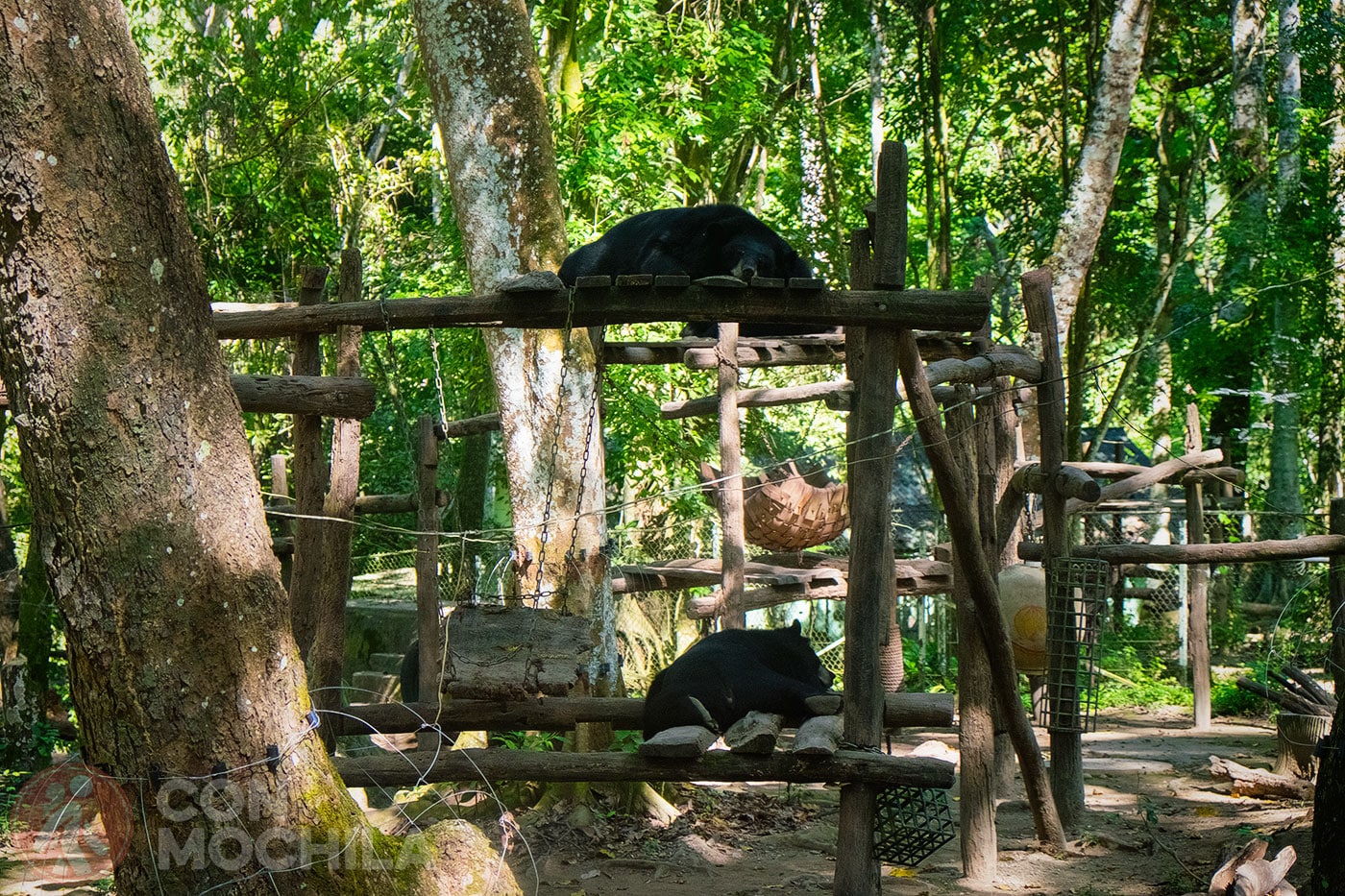
From a wooden platform you can watch them climbing trees, playing with toys used for “environmental enrichment” or simply sleeping. In the little shop you can make a donation or buy a t-shirt to help the cause. More information on the Free The Bears website.
Two hours upriver from Luang Prabang, we find the Pak Ou Caves. There are two caves to visit, Tham Ting (the most popular) and Tham Theung (the entrance overlooking the Mekong), both filled with more than 4,000 miniature wooden Buddhist figures that pilgrims and locals have been leaving behind for hundreds of years.
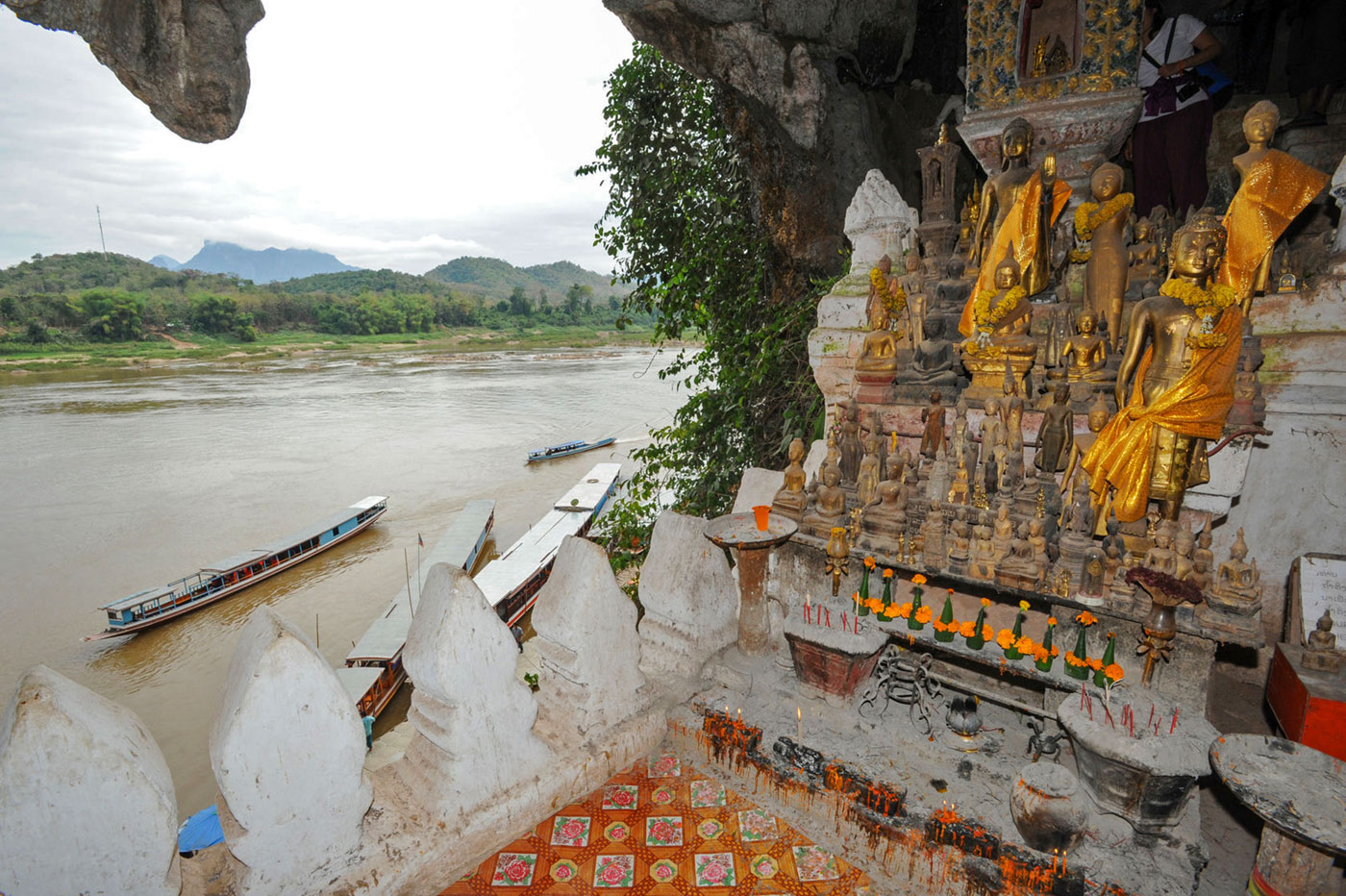
During your visit, remember to bring a flashlight to enter the caves and discover some of the more hidden figures. Near Pak Ou, you will find the village of Hang Xai, where typical Lao wine is produced.
It is said that Tat Sae (or Tad Sae) are not as spectacular as Tat Kuang Si, but we actually liked them better for swimming, despite the almost freezing water, even though they were the first ones we visited in Southeast Asia. To access them you have to go first by tuk-tuk to the area of the river where the boats are, and then get on a small boat that takes you to the waterfalls.
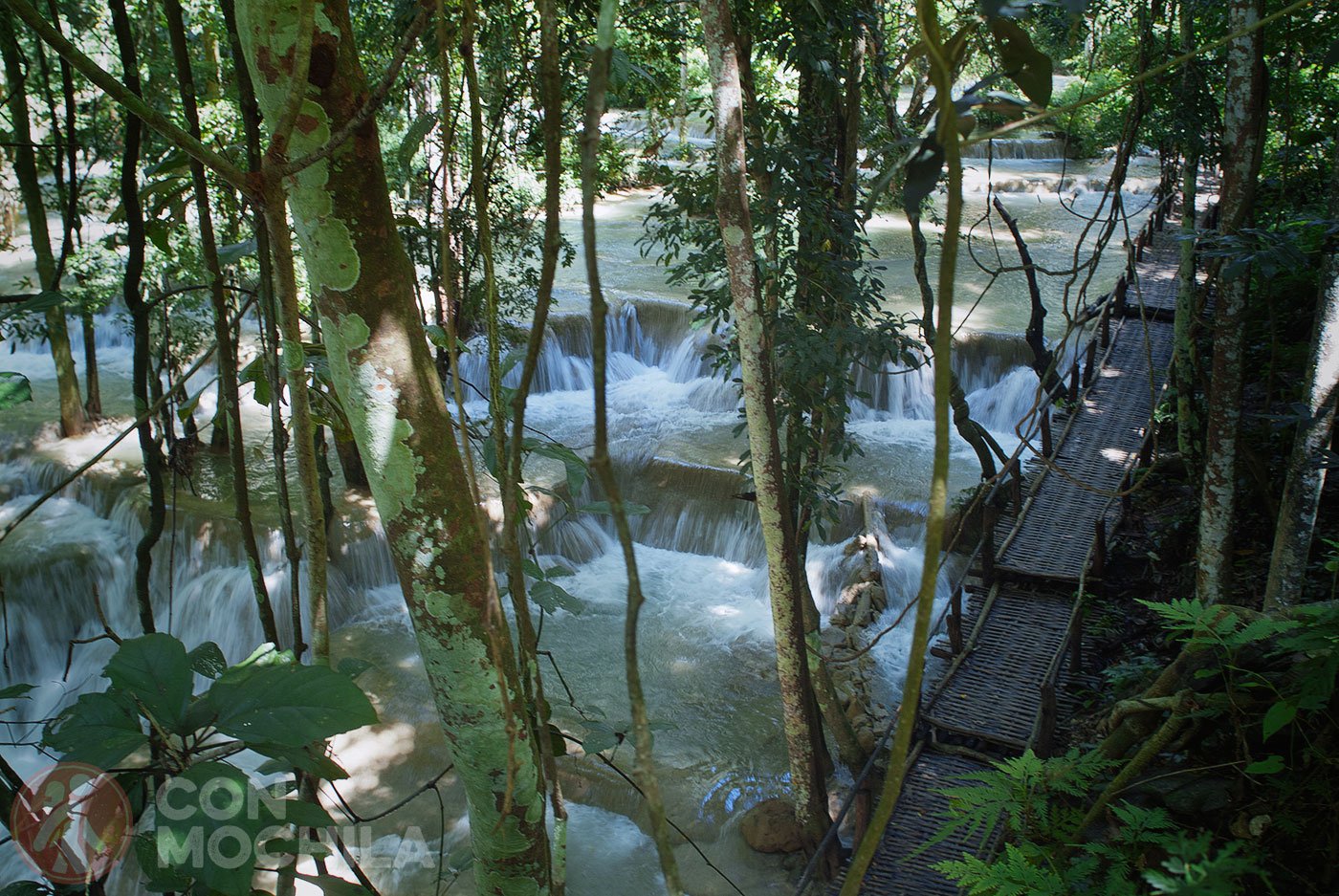
It is best to visit during the rainy season, as you can see many more waterfalls over the limestone formations. You can watch our visit in this video (very old and of rather poor quality, but you can see something).
We came to Khoun Moung Keo waterfalls on the recommendation of a German guy who was our neighbor at the Bamboo guesthouse. He told us that they belonged to a doctor who opened a kind of restaurant next to the waterfalls, located on his property. They are on the way to the famous Tat Kuang Si, and are a haven of peace compared to the latter.
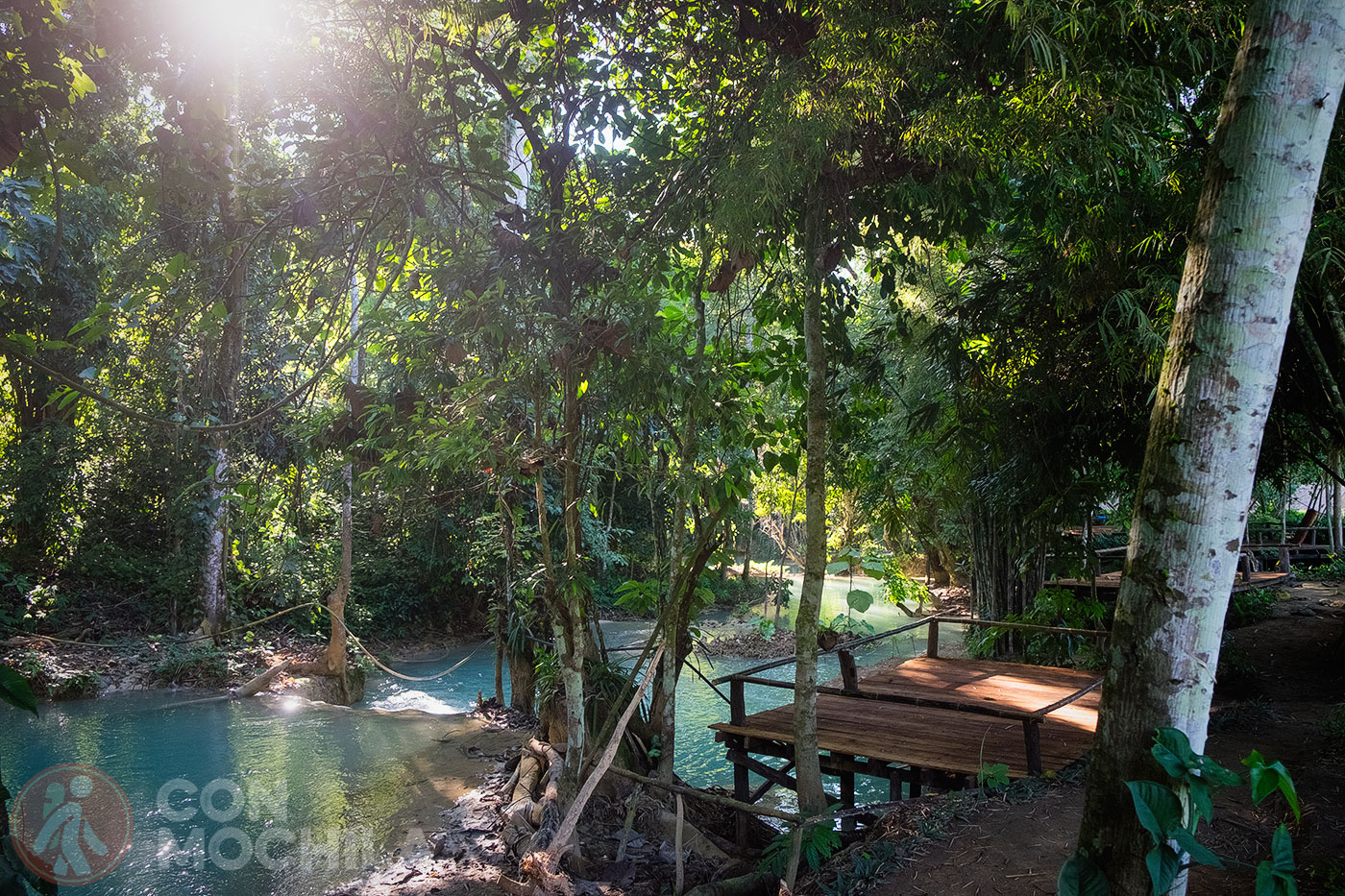
So one day we got on the motorbike, showed up there, met the family, and sat down to eat next to the clear water. Just the two of us, without anyone bothering us.
You haven’t been to Luang Prabang until you’ve sat down to watch the sunset on one of its terraces overlooking the Mekong. If you also want to have a different perspective, we recommend this sunset cruise on the Mekong River. For 2-3 hours you will enjoy watching the sunset from one of the most special rivers in Asia while they prepare a typical barbecue from the area.
Discover the colonial architecture and Buddhist temples of this wonderful city on a guided full-day tour of Luang Prabang. Or the Unesco World Heritage city tour. On this 4-5 hour tour you will be taken to markets, museums and a local craft center.
Explore Lao cuisine by trying typical Southeast Asian dishes with a Lao cooking class including lunch. You’ll create a full meal after visiting a lively morning market. You can choose between a morning or afternoon workshop, and this class is also suitable for vegetarians as the menu can be adapted.
On our last visit to Luang Prabang we wanted to treat ourselves and our friends, and we booked into Le Sen Boutique, a very nice place with very friendly staff and free shuttle service to the city center as many times as you wanted.
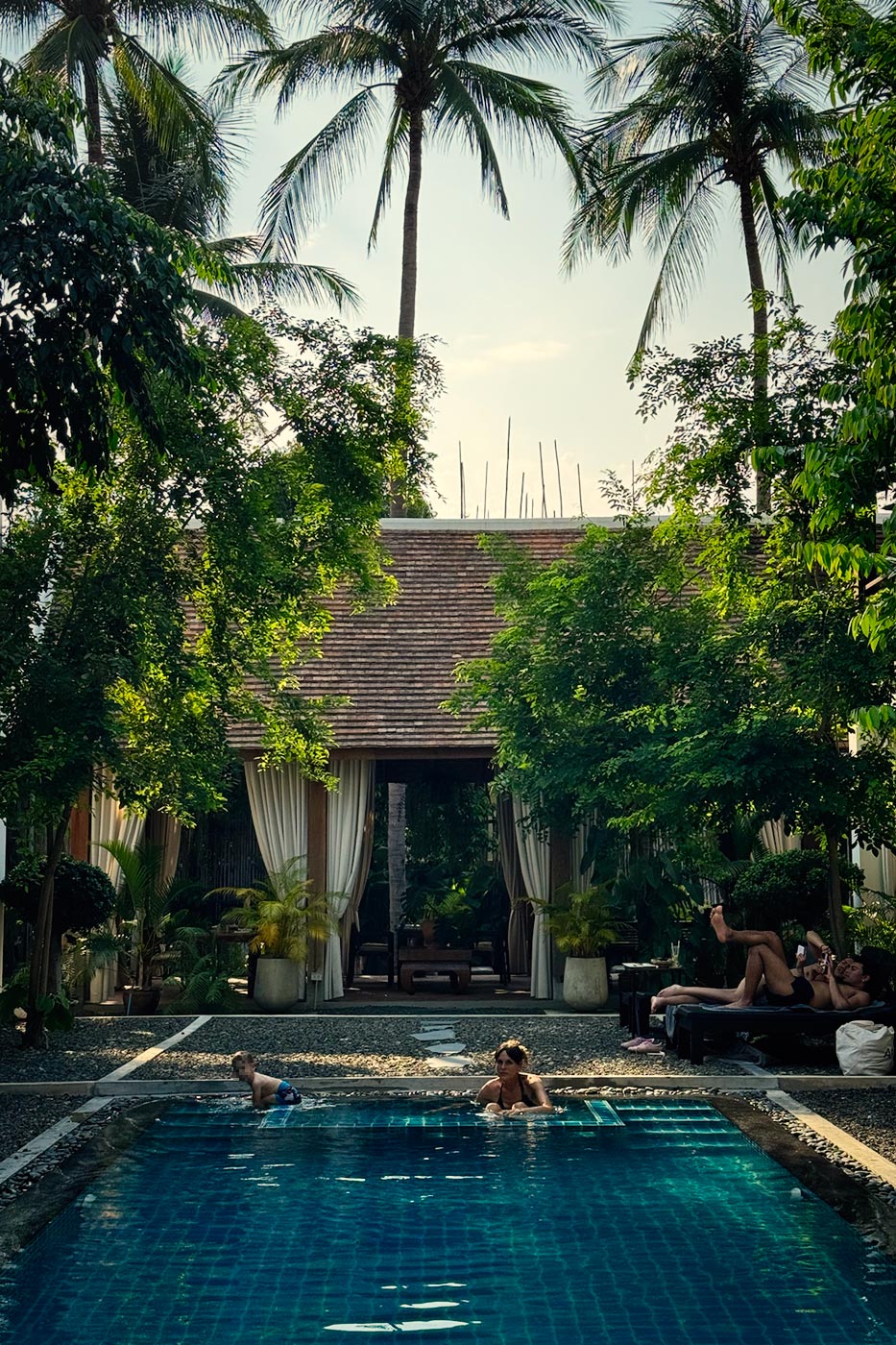
You can also take a look at the recommendations we detail below:
To get around Luang Prabang, it is best to walk to enjoy the atmosphere. You can also rent a bike and take a ride through all the streets.
For the surrounding areas, it is best to do it by tuk-tuk, you can negotiate the price with the drivers and they will wait for you until you finish your visit.
Lao Lao Garden: Our favorite place in Luang Prabang is Lao Lao Garden. It’s a simple restaurant with a multi-level garden that we fell in love with the first time we went. A great place to try local food in an unbeatable atmosphere.
Utopia: This bar is not exactly cheap, nor is it known for its local cuisine, but it does have a wonderful garden next to the Nam Khan River that we loved. It is very touristy, yes, but we found it ideal for having a few beers at sunset. There are vegetarian options on the menu, such as the enormous black bean burger that will leave you glued to your chair…
Luang Prabang is the ideal place to enjoy gastronomy, as it is full of restaurants suitable for all budgets. Eating well and cheaply is also possible, of course, either in more modest establishments or on the street, and here are some examples: In one of the alleys that lead to the night market, they set up a vegetarian buffet every night, where there are many dishes to choose from.
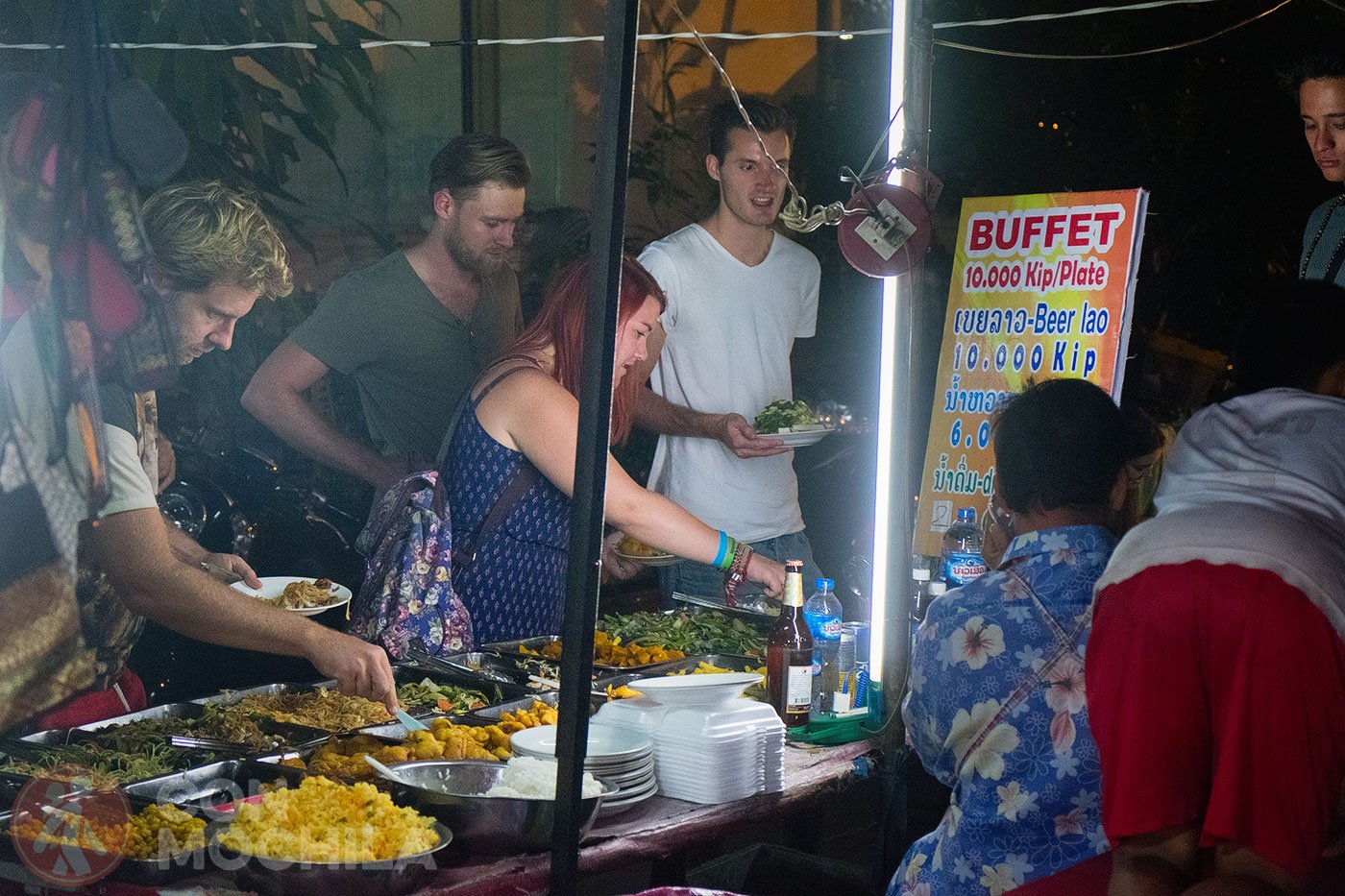
If you don’t mind eating on the street, this is a very cheap place. Tired of rice and missing bread? Well, you can’t leave Luang Prabang without trying one of those sandwiches, the famous baguettes that they prepare in the street stalls.
Click on the image and it will take you to a new Google Maps window with all the points of interest to travel around Luang Prabang.